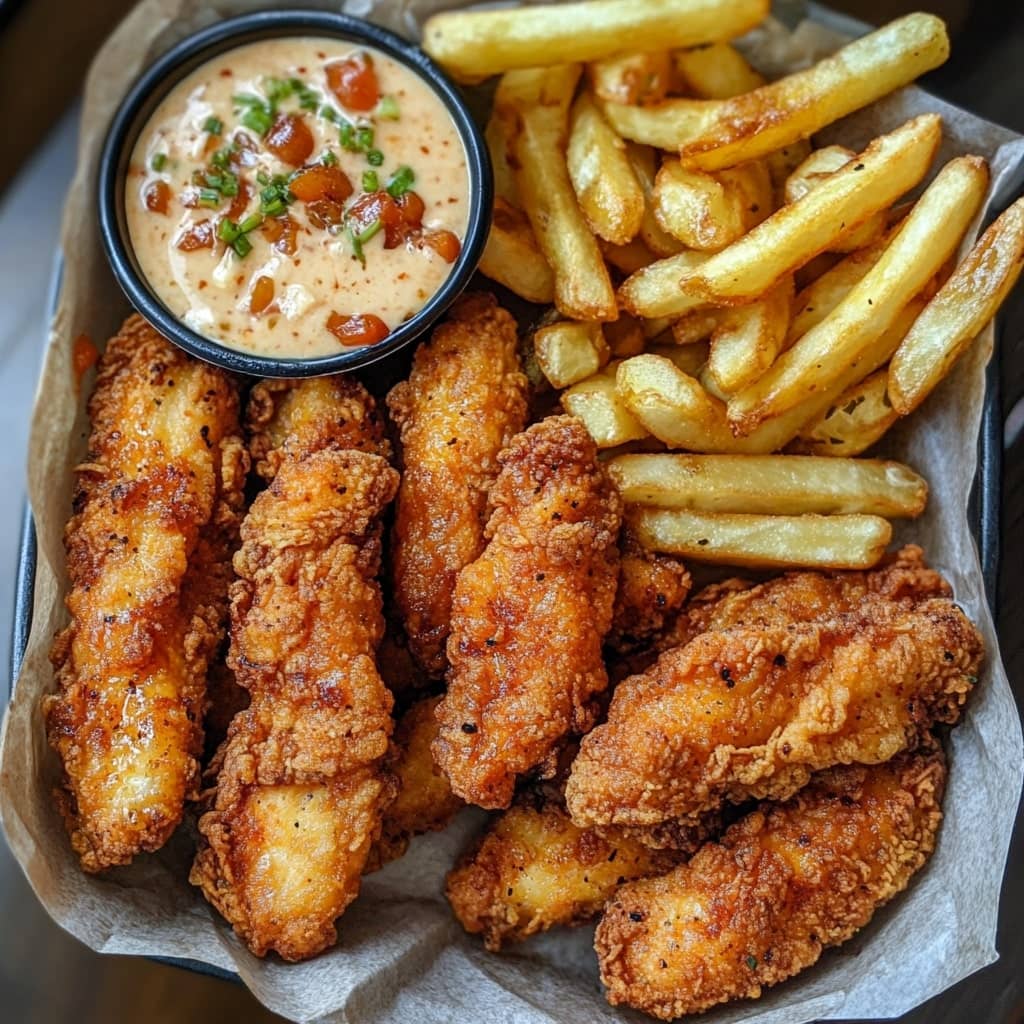Ingredients
Method
- In a medium-sized mixing bowl, whisk together the buttermilk, pickle juice, hot sauce, egg, and salt. Add the chicken tenders to the bowl, ensuring they're fully coated. Tightly cover and refrigerate for 4 hours or more, with 2 hours being the minimum. Take the chicken out of the fridge 30 minutes before you're ready to cook.
- In a large shallow dish or curved baking tray, combine the dry mix ingredients. One by one, take the chicken tenders directly from the marinade and place them into the dry mix. Use your hands to thoroughly coat the chicken, pressing the flour into every nook and cranny to create plenty of small, flaky bits. Shake off any excess flour, then set the tender aside and repeat the process.
- Heat the oil in a suitable pot or cast-iron skillet to 350°F/175°C. Working in 3-4 batches, carefully place the tenders into the hot oil and let them cook for a few minutes. The temperature may drop slightly to around 320°F/160°C, but try to maintain it as best as you can. Flip the tenders and continue frying for another few minutes until they are deep golden and crispy. Remove them and place them on a wire rack with a tray underneath to catch any excess oil. Cooking times will vary depending on the size of the tenders, so be vigilant and ensure the chicken is white and piping hot in the center.
- Once all the tenders are fried, allow the oil to cool slightly, then scoop out 1/2 cup and pour it into a small bowl. Add hot sauce, honey, smoked paprika, garlic powder, and salt (if needed) and whisk until smooth to create the glaze.
- Brush the glaze generously over the tenders, then serve and enjoy
Notes
a) Chicken Tenders - If you can't find chicken tenders, you can simply slice chicken breasts into strips. While this will technically result in fried chicken strips instead of tenders, it will still work just fine. For reference, 1.3lb/600g of chicken equals around 16 tenders.
b) Hot Sauce - Choose a hot or mild hot sauce depending on your preferred spice level. I personally enjoy Cholula (it’s not too spicy or vinegary).
c) Glaze - Traditionally, cayenne pepper is used in the glaze, but I prefer using hot sauce. If you want to substitute cayenne, increase the cooking oil to 3/4 cup to compensate for the missing liquid. I suggest starting with 1 tablespoon of cayenne and adjusting to taste (some recipes go as high as 6 tablespoons!). If you’re using hot sauce, be aware that different brands vary in spice, so adjust according to your preference. I usually go for 1/2 cup of hot sauce for a good kick of spice, but if you want it hotter, add cayenne pepper in 1 tsp increments.
d) Pickle Juice - This is simply the brine from a jar of pickles (or gherkins in the UK). It enhances the flavor and helps tenderize the chicken. If you don't have pickle juice, you can substitute with extra buttermilk.
e) Serving - Based on my experience in Nashville, many places serve tenders on a thick slice of bread in a small basket, typically accompanied by pickles/gherkins, plus extra hot sauce and honey on the side. I also enjoy them with a dip, such as Blue Cheese or Ranch dressing.
f) Calories - Calculating the exact calories is tricky, but here’s an estimate based on 16 tenders (calories per tender). This assumes that half of the marinade sticks, all of the dry mix (which is an overestimate), and 1.5 tsp of oil per tender. This estimate does not include any sides.
